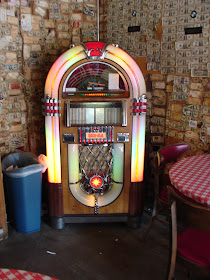The first eleven photos belong to a young man named Rob Brinkerhoff who so kindly allowed us to use his digital pictures for our In&Out story; the last 3 pictures are ours. We last climbed Humphreys Peak 23 years ago, long before any of us had ever heard of a digital camera.
This is one of the great hikes of Arizona so if it might be something you would like to do this summer, let us suggest you start planning now. Here is our story…
Let
us suggest that you arise early one of these warm, summer mornings and leave
your Sonoran Desert home, traveling north on I-17 toward Flagstaff. Over the next 2 hours of time you will
travel through what zoologist Clinton Hart Merriam once suggested are 6 of the
7 lifezones found in North America.
For awakening in our low desert home to walking through the natural
biome above the Arctic Circle is possible when our goal this day is completed
by “Standing on Top of Arizona!”
Humphreys
Peak rises 12, 633 feet above sea level and is the tallest mountain in our
state that is credited with having 3,928 official mountains peaks. Located just 14 miles north of
Flagstaff in the San Francisco Mountains, this ancient volcano once again
becomes available for Arizonans to assault its summit as the winter snows melt
with the warmth of the summer sun.
Warmth
is a relative thing when one climbs to the top of Humphreys Peak. Even in the climbing months of July,
August and early September, the temperature on the summit can be in the mid-30s
and a cool wind will always be blowing.
A light jacket, stocking hat and gloves are a must along with plenty of
water and trail snacks.
The
journey to the “Top of Arizona” begins at the Arizona Snowbowl. Here is found the 9,300-foot high
trailhead for the 4.8-mile climb to the top of our beautiful
state. Some who have made this
hike contend that it is the “longest 4 1/2 mile hike in the world.”
From
the trailhead the first ¼ mile passes through a flat, open meadow full of
Alpine iris and other summer wildflowers.
Soon the adventurous hiker arrives at the edge of an old-growth forest
of Douglas and White fur, Englemann spruce, aspen and ponderosa pine
trees. The trail begins a gradual
but continual rise up through this forest and the side of the majestic mountain
with a series of long, switchbacks.
For
almost 3 miles one has walked through some of Arizona’s most beautiful
forest. At the 10,000-foot level a
massive volcanic rockslide, approximately 100 feet wide and flowing hundreds of
feet down the mountainside is found.
This ancient river of stone, frozen in time, is a graphic reminder of
this mountain’s violent origin.
Climbing
even higher, the hiker now notices that one’s breathing is a little deeper and
harder. At the 11,000-foot level,
the trees of the forest begin to disappear. Timberline is reached at 11,400 feet and the bristlecone
pine found here and above are bent and twisted into hideous shapes due to the
year long howling of the wind.
These ancient pines, considered by some as the oldest living thing on
earth, began growing on this mountain at the time the pyramids of Egypt were being constructed.
The
Humphreys Peak trail now becomes rockier and evidence of rockslides caused by
the melting snows of winter is everywhere as one climbs. Above the timberline all trees slowly
have disappeared and the only tundra found in Arizona above the 11,800-foot
level now replaces the forest.
Mt.
Agassiz is now in view and at an elevation of 12,356 feet, it is second only to
our goal in rising above Arizona.
At 11,800 feet hikers also arrive at what is known as the saddle and the
connecting ridgeline between Mts. Agassiz and Humphreys. Here too one will see for the first
time the goal, the summit of Humphreys Peak, some 870 feet higher and still
another mile away.
From
this point, the trail to the top is a series of switchbacks over basically a
cinder pile of loose talus and one’s footing could be very treacherous. In addition, the majestic mountain does
not give up its glory easily, as 3 false summits appear and pass as the weary
hiker makes the final quarter mile journey and 150 feet rise to “Stand on Top
of Arizona!”
In
our Grand Canyon State one’s legs can take them no higher than to the top of
Humphreys Peak. You are truly
standing on Arizona’s rooftop, some 2.4 miles above sea level, with a panoramic
view like no other. This is
not an easy Arizona hike and one should train well before attempting it. But if you make the effort, it will
become one of your most treasured memories of getting out and finding Arizona.













































